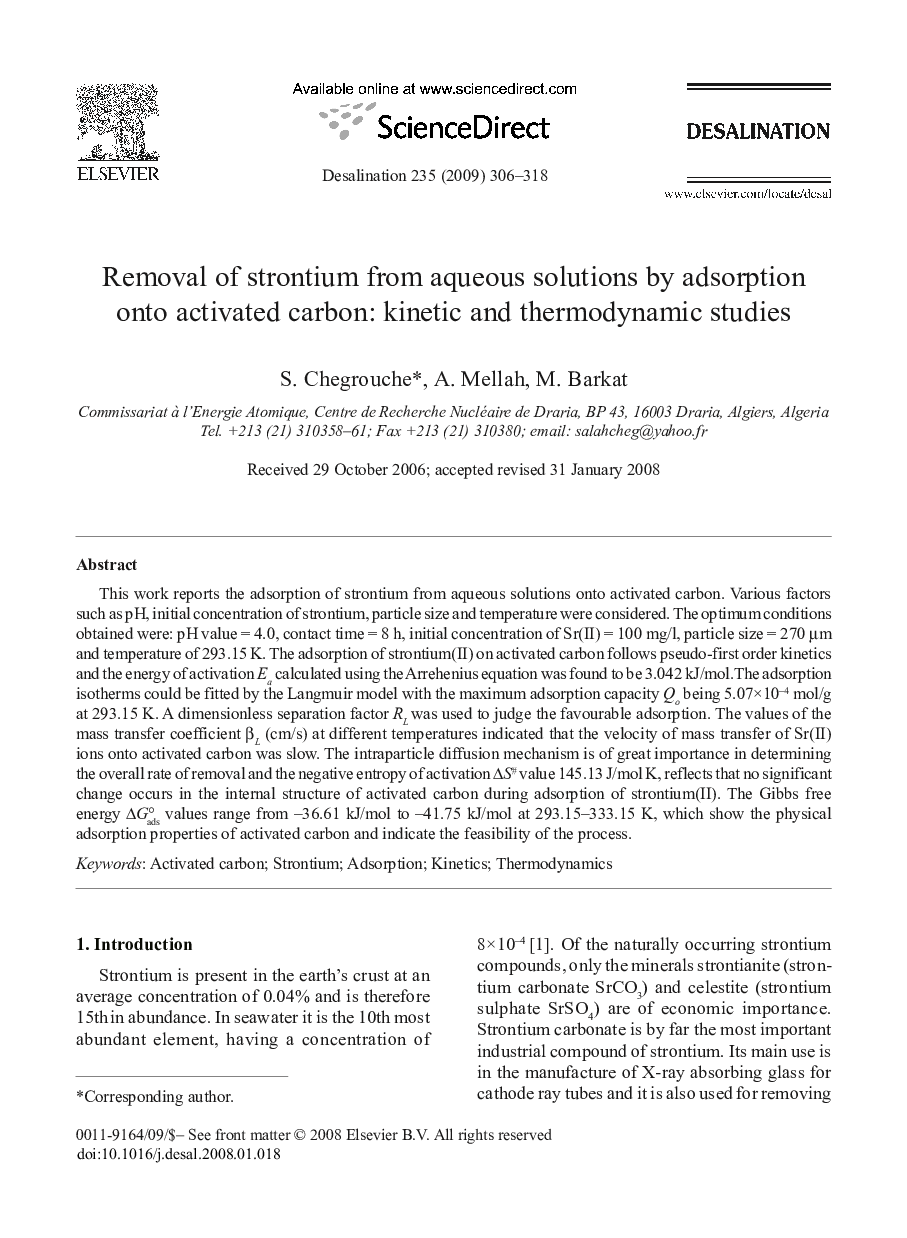| Article ID | Journal | Published Year | Pages | File Type |
|---|---|---|---|---|
| 627118 | Desalination | 2009 | 13 Pages |
This work reports the adsorption of strontium from aqueous solutions onto activated carbon. Various factors such as pH, initial concentration of strontium, particle size and temperature were considered. The optimum conditions obtained were: pH value = 4.0, contact time = 8 h, initial concentration of Sr(II) = 100 mg/l, particle size = 270 μm and temperature of 293.15 K. The adsorption of strontium(II) on activated carbon follows pseudo-first order kinetics and the energy of activation Ea calculated using the Arrehenius equation was found to be 3.042 kJ/mol.The adsorption isotherms could be fitted by the Langmuir model with the maximum adsorption capacity Qo being 5.07×10–4 mol/g at 293.15 K. A dimensionless separation factor RL was used to judge the favourable adsorption. The values of the mass transfer coefficient βL (cm/s) at different temperatures indicated that the velocity of mass transfer of Sr(II) ions onto activated carbon was slow. The intraparticle diffusion mechanism is of great importance in determining the overall rate of removal and the negative entropy of activation ΔS# value 145.13 J/mol K, reflects that no significant change occurs in the internal structure of activated carbon during adsorption of strontium(II). The Gibbs free energy ΔG°ads values range from –36.61 kJ/mol to –41.75 kJ/mol at 293.15–333.15 K, which show the physical adsorption properties of activated carbon and indicate the feasibility of the process.
